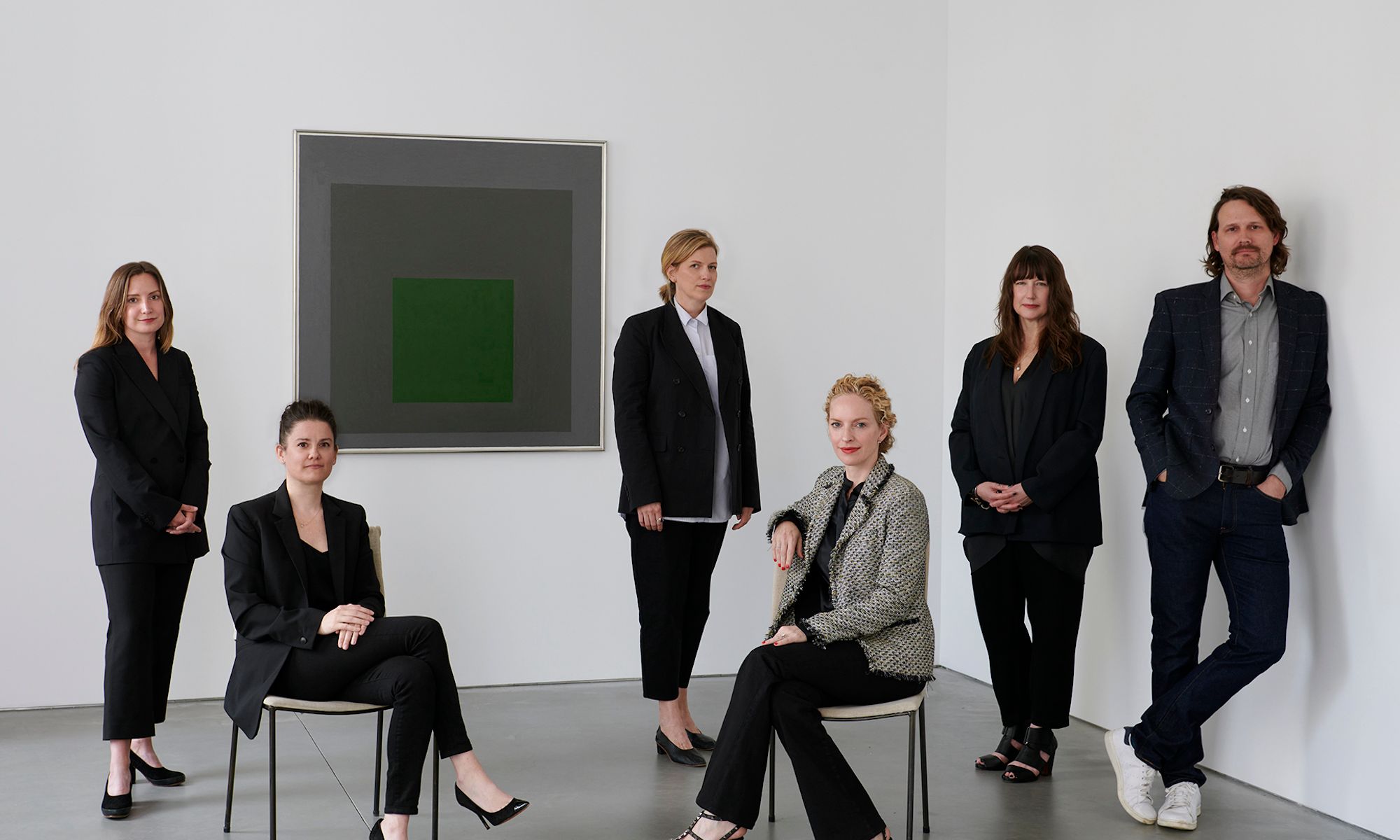David Zwirner's secondary market department (from left to right): Katherine Lukacher, the gallery’s director of secondary market online sales; Meghan Hill, the gallery’s senior director of sales; Alexandra Whitney, who heads the gallery’s global research department; Kristine Bell, a senior partner who leads the department; Kelly Reynolds, the gallery's senior director of operations, exhibitions and registration; and Cy Amundson, director of art handling. Artwork: Josef Albers, Homage to the Square: Embedded, 1963 Artwork: © The Josef and Anni Albers Foundation / Artists Rights Society (ARS), New York. Courtesy The Josef and Anni Albers Foundation and David Zwirner. Photo: Jason Schmidt
The New York-headquartered global mega-gallery David Zwirner is launching a consignments portal on its website that might more firmly ground the gallery in the secondary market, a landscape presently ruled by auction houses.
The consignment portal, simply branded “Consignments”, is also demonstrative of how galleries are continuing to expand their digital footprints in a post-pandemic world, as hybrid business models become the standard, and even a gallery like Zwirner—with half a dozen brick-and-mortar gallery spaces around the world and counting—continues to host digital exhibitions and drive sales via their online viewing rooms.
“We have always been in competition with the auction houses when it comes to the secondary market,” says Kristine Bell, a senior partner at David Zwirner and head of the gallery’s secondary market department. “As a private gallery, as opposed to an auction house, we can offer clients a discrete and bespoke service when it comes to selling a work of art, with more flexible timelines and commission structures, and most importantly, with real value-building art historical treatment that auction houses cannot provide due to the volume they are saddled with.”
The gallery will be open to consignment submissions of works by all artists, not just those already on the Zwirner roster, further articulating the divide between its primary and secondary market business models. “Over the past few years our sales team has grown globally and, with that, the demand for high-quality inventory on the secondary market has increased significantly,” Bell says. “Our clients are constantly asking us to find specific artworks to fill holes in their existing collection. This consignment portal will help us expand our business opportunities to meet the demands of our clients and help them connect with great works of art beyond our existing gallery program.”
Zwirner himself said in a statement, “The secondary market has been a key business driver for our gallery since the very beginning,” adding, “I’m excited that we can expand our activities beyond our historic exhibitions and our art fair presentations and into the digital space, which has been such an exciting growth engine for the gallery in the last three years.”
During that same period, auction houses have also inched further onto primary market galleries’ turf. In the spring of 2020, Sotheby’s launched its Gallery Network offering new-to-market works for purchase online.

